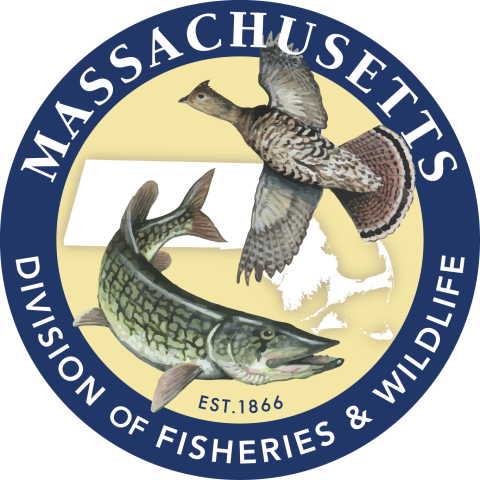
|
An ambitious marsh restoration project supported by MassWildlife and a group of conservation partners was honored by the Environmental Business Council of New England.
MassWildlife is a leading partner in a cooperative large-scale salt marsh restoration project in Essex County. At 16,000 acres, Great Salt Marsh is the largest salt marsh in New England. The sprawling coastal marsh provides many benefits including maintaining water quality, storing carbon, providing habitat for many types of wildlife, supporting recreational opportunities, and protecting 7 coastal towns from flooding.
Along the Atlantic Coast, the loss of salt marsh habitat is occurring at an alarming rate. Great Marsh contains a network of ditches, berms, and roads – relics from historical agricultural activity and mosquito control – that have degraded the marsh and made it more vulnerable to sea-level rise and associated impacts from climate change. Without intervention, the Great Marsh is projected to convert to low marsh before 2070 and tidal flats before 2100.
Rising to the urgent need, MassWildlife and a group of several organizations, including The Trustees and U.S. Fish and Wildlife Service, joined together to explore restoration options in 2018. Since then, many more partners have joined the effort and work has been done to complete preliminary salt marsh platform restoration designs, pilot restoration techniques, apply for funding, streamline regulatory requirements, and design monitoring protocols. Today, restoration activities using proven nature-based techniques, such as ditch remediation, runnels, and creation of nesting islands, are now in process on over 8,000 acres.
“The synergy created between project partners, coastal scientists, and regulators is having a positive impact on MassWildlife’s ability to meet saltmarsh sparrow habitat restoration goals,” said Patricia Huckery, MassWildlife’s Northeast District Supervisor. “Restoring the marsh also protects coastal communities, fish nurseries, and the myriad other benefits of a healthy salt marsh ecosystem.”
In June, the Environmental Business Council of New England presented the following organizations with the Merit Award for Leadership: The Trustees of Reservations, U.S. Fish and Wildlife Service, Northeast Wetland Restoration, Mass Audubon, MA Division of Fisheries and Wildlife, Northeast Massachusetts Mosquito Control and Wetlands Management District, Greenbelt, Essex County Greenbelt Association, University of New Hampshire, Rimmer Environmental Consulting LLC, Massachusetts Bays National Estuary Partnership, and MA Division of Ecological Restoration.
Habitat highlight: Salt marsh
Salt marshes form in areas subject to ocean tides that are mostly sheltered from waves. Peat develops in the higher marshes, with marsh plants extending into flats. Many kinds of birds forage in salt marshes and over 300 bird species are documented in Great Marsh. A few nest there as well, such as seaside sparrow and the saltmarsh sparrow which is state-listed as Special Concern pursuant to the MA Endangered Species Act. In fall and winter, short-eared owls, snowy owls, and northern harrier hunt in salt marshes. In summer, snowy egrets, American black ducks, and many shorebirds forage in pools at low tide. Thousands of birds rest and forage here during migration.
If you’re interested in viewing salt marsh wildlife, try visiting one of these locations:
Parker River National Wildlife Refuge
William Forward Wildlife Management Area